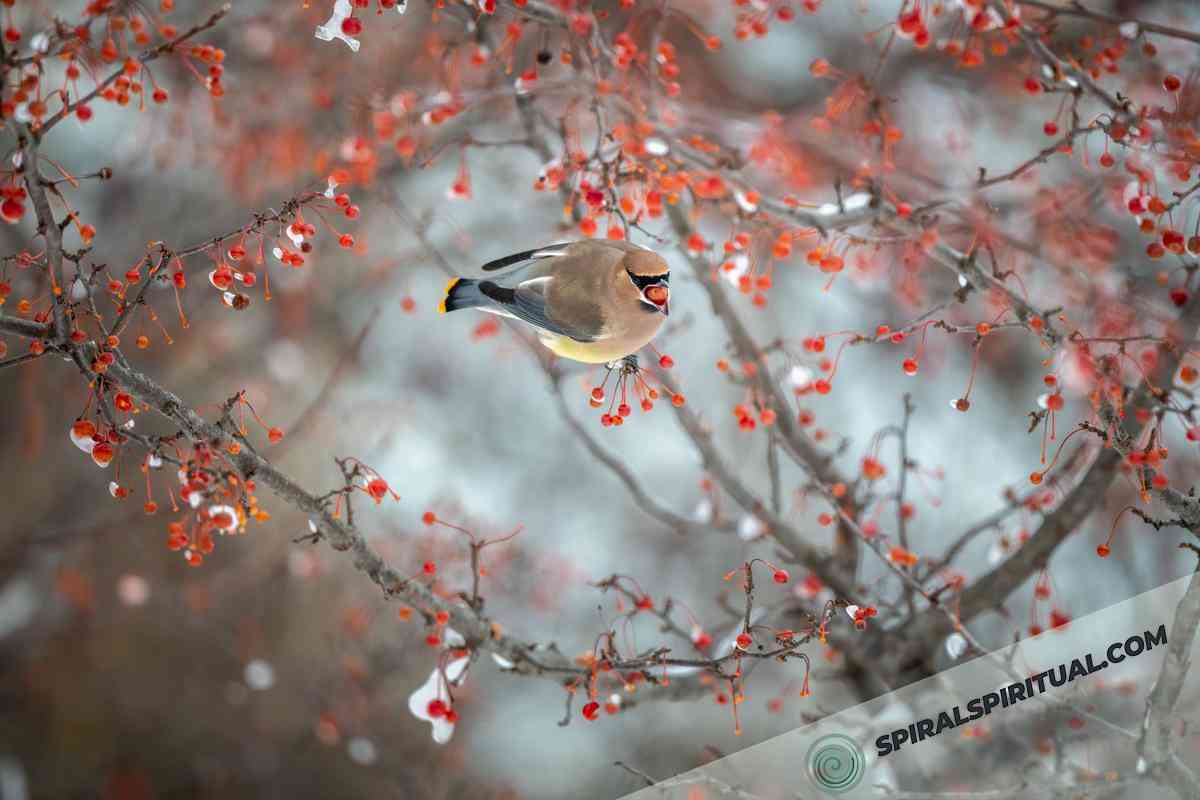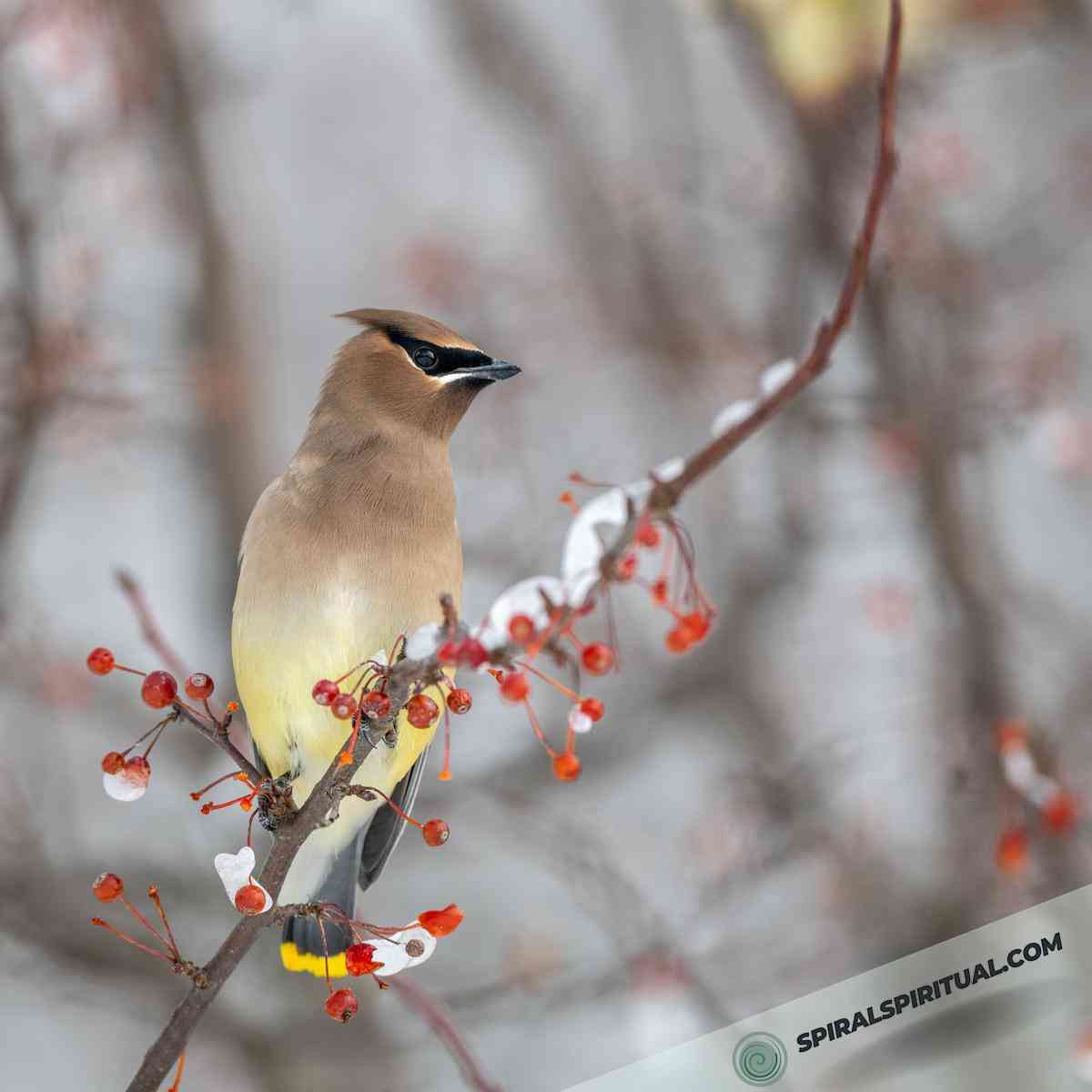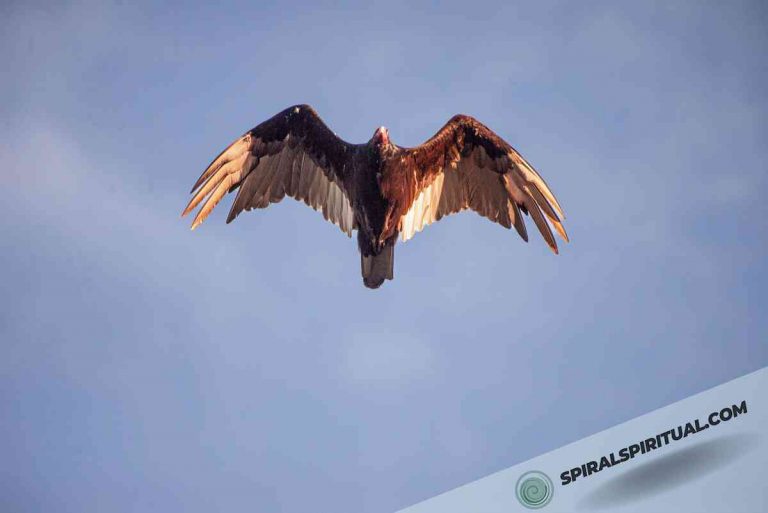Last Updated on May 2024
Come to think of it, have you ever spotted a Cedar Waxwing with its sleek brown body and bright yellow belly band? These unique birds are not only beautiful, but they also carry deep spiritual meanings. In this article SpiralSpiritual will try to uncover the symbolic meaning of this bird, so stay with us if you are also interested as we are!
The cedar waxwing is a bird that represents having plenty of good things spiritually and living in harmony. These birds are seen as beautiful and connected to community. When a cedar waxwing appears, it is thought to be an invitation to feel peaceful in your environment and appreciate the good things in life.
5 Spiritual Meanings Behind the Cedar Waxwing
One day, my friend and I were walking in a peaceful park. We saw a colorful cedar waxwing bird sitting on a branch. So to speak, its beauty made us feel very calm in that moment. It reminded us how important it is to value our friendships with others and find peace within ourselves. At the end of the day, seeing that cedar waxwing kinda became a special symbol for our friendship.
The cedar waxwing holds several general spiritual meanings across various beliefs and cultures. Here are the five most common symbolic interpretations of this bird:
- Abundance and Prosperity: The cedar waxwing bird is respected as a symbol of having plenty. It represents the spiritual idea of wealth and success.
- Unity and Harmony: The cedar waxwing likes to gather in flocks and be social. This symbolizes the importance of unity and harmony within communities.
- Beauty and Elegance: Basically, the cedar waxwing has striking bright feathers and a distinctive crest on its head, making it look beautiful. Seeing these birds can inspire people to appreciate nature’s beauty.
- Clarity and Intuition: the waxwing can detect insects just by seeing them from far away. This connects to the symbolic meaning of having clarity and intuition.
- Transformation and Renewal: interesting to note, waxwings are seen during the spring and fall when they migrate. This symbolizes themes of growth and renewal.
The Symbolism of Cedar Waxwing in Different Cultures
As I was saying, each culture connects its own meanings to this striking bird, based on long-held traditions and beliefs. Here are the 5 most common meanings behind cedar waxwing according to those cultures:
- Native American Tribes: For certain Native American tribes, the cedar waxwing is seen as a symbol of playfulness, joy, and communication. Its social nature and pleasant calls represent the essence of community and unity, bringing a feeling of togetherness.
- Chinese Culture: Fair enough, in Chinese symbolism, the waxwing represents qualities of grace, elegance, and beauty. People admire its stunning appearance and connection to nature, so it has become a symbol of good fortune, often associated with luck and prosperity.
- Japanese Tradition: So, in Japan, the cedar waxwing, called “hōkiboshi,” is revered as a messenger from the divine or spiritual realm. Its graceful flying and melodious songs are seen as signs of spiritual guidance.
- European Folklore: European folklore links the waxwing to love, loyalty/fidelity, and pursuing your true passions.
Cedar Waxwing Color
| Colors | Symbolic Meanings |
|---|---|
| Brown | The color brown is often associated with stability, grounding, and nurturing. |
| Gray | The color gray is often associated with neutrality, balance, and calmness. It symbolizes wisdom, knowledge, and a balanced perspective on life. |
| Yellow | The color yellow is often associated with joy, happiness, and positivity. It represents a sense of optimism, enlightenment, and clarity. |
| Red | The color red is often associated with passion, energy, and strength. It symbolizes courage, vitality, and intense emotions. |
| Orange | The color orange is often associated with creativity, enthusiasm, and warmth. It represents a sense of adventure, inspiration, and the ability to express oneself. |
| Black | The color black is often associated with mystery, power, and protection. It symbolizes the unknown, depth, and a connection to the spiritual realm. |
Is the Cedar Waxwing a Good Omen?

Actually, some people do really believe that having a Cedar Waxwing around their home or garden brings good luck or positive energy due to its beauty and graceful presence. Other than that, there are no actual mentions of Cedar Waxwing serving as an omen.
If They’re Appearing in Your Dreams
In the meantime, the cedar waxwing bird has symbolic meaning when it appears in dreams. It often represents harmony, intuition, and balance between the physical and spiritual worlds. Basically, seeing a cedar waxwing in a dream is seen as a message of divine guidance, urging the dreamer to trust their instincts and feel a sense of inner connection.
Believe it or not, dreams with cedar waxwings can suggest a need for more balance and alignment in one’s life. It kinda encourages the person to listen to their intuition and inner wisdom. When interpreting dream symbols, it’s also important to consider your own personal associations and feelings.
If You See a Dead Cedar Waxwing

Seeing a dead cedar waxwing in dreams sometimes means an end or missed opportunity, as a dead bird suggests a need to transform and let go of old ways of thinking. Come to think of it, it may show a need to release things holding you back.
Let me explain: dreaming of a dead cedar waxwing could point to requiring renewal, change, and new starts. It can serve as a reminder to move forward without clinging to the past.
The Final Verdict
So, from where we stand today, the cedar waxwing has different meanings in various cultures, symbolizing beauty, harmony, balance, and intuitive guidance. Its colors, like brown for grounding and red for passion, add to its symbolism. In dreams, it represents transformation and letting go of old patterns.
References
Here is a list of literature that I was using for creating this article:
- “Animal-Speak: The Spiritual & Magical Powers of Creatures Great & Small,” Llewellyn Publications, by Ted Andrews.
- “Birds: Myth, Lore, and Legend,” National Trust, by Rachel Warren Chadd and Marianne Taylor.
- “The Book of Symbols: Reflections on Archetypal Images,” TASCHEN, by the Archive for Research in Archetypal Symbolism.








